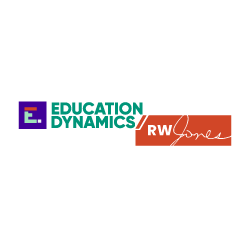Four years, a leafy campus, full-time attendees. What it has long meant to attend college in the U.S. is being turned on its head as institutions find new ways to cater to students' unique postsecondary education needs.
Today about one-quarter of full-time students also work full-time, and a similar share are parents. And for the majority of education consumers — about six in 10 — getting a good job is the main reason they enroll in college, said Ben Wildavsky, senior vice president of national engagement at the Strada Education Network, during a panel on the topic at SXSW EDU in Austin, Texas, this week.
"We found what matters most to consumers is that the education they experience is relevant," Wildavsky said, citing research done with Gallup. He notes "relevant" can be a buzzword. "This is not that old, kind of tired false dichotomy of the philosopher versus the welder," he said. "You can increase value at every degree level (and) in every field of study if you find ways to thoughtfully connect learning to a future career path."
Yet there's a documented disconnect between colleges and employers over how well higher ed is doing that. About one-third of business leaders "strongly agree" college graduates are ready for the workforce, according to research Wildavsky presented. Meanwhile, college leaders have a much more optimistic view, with nine in 10 chief academic officers saying institutions are adequately preparing students, he said.
"You can increase value at every degree level (and) in every field of study if you find ways to thoughtfully connect learning to a future career path."

Ben Wildavsky
Senior vice president of national engagement, Strada Education Network
Colleges, of course, face pressure to prove their graduates can use what they learned to get good jobs. And so many are looking for ways to better align their curriculum with skills students will need in the workforce. The issue can be contentious, though, drawing concern that doing so will limit the programs available to students looking for affordable options to those with more discernable links to the job market.
Institutions are taking a variety of approaches to address the skills question. Western Governors University — an online nonprofit college that offers degrees in business, IT, teaching, and nursing and health — works with employers and faculty to figure out what hard and soft skills are needed among people working in those fields, said its provost and chief academic officer, Marni Baker Stein.
Curriculum is layered on top of those "skills maps," which are also used to segment educational offerings. "We believe every competency a student earns is of value," she said. "If they have to leave us for a time and then come back and finish the degree later, we want to make sure they have something of value to take with them."
It's an approach that's gradually working its way across higher ed as a way to help students manage the cost and time commitment of postsecondary education by offering benchmark credentials such as industry certifications, badges and certificates along the way.
Western Governor's competency-based education model targets adult learners and allows them to move through a program based on their level of mastery rather than a set timeframe. The college also lets students in some programs complete third-party industry credentials and count them toward their degree, Baker Setin said.
Merging credentials from outside the university, whether from industry or other institutions, with those earned in its programs presents a challenge for students when it comes to sharing their academic record with employers, she said.
For its part, Western Governors is working with students on a new kind of transcript that better aggregates that information. "It's very interesting to get students involved in that kind of design work because they will always surprise you, and it's always totally awesome what they come up with because they're the users," she said.
Unbundling higher ed
Breaking down cost is another way institutions can take a more customer-centric approach to their offerings, said fellow panelist James Toscano, president of Partners for College Affordability and Public Trust, a nonprofit that advocates for college affordability.
"On the administrative side of the house, we don't know how to serve consumers because we don't know how to marshal our own resources internally to maximize the investment of those consumers," he said, citing a need for better program- and unit-level cost information.
Doing so can expand options for students and institutions. He points to a future where colleges can unbundle costs that are applied across the board and give students the option to pay only for the services and amenities they need.
Looking to data can help colleges better understand the relationship between cost and operations and the impact on students, Baker Stein said. Western Governors leadership meets biweekly to evaluate key performance indicators across its student body. "That takes a whole mindset and infrastructure and institutional will to not only surface those numbers, analyze those numbers, commit to solving for those numbers, but then also commit to continuously improving our practice," she said.
Student success-oriented operations like enrollment management and advising tend to be a focus for data-driven improvement, she added. Often, however, the issue is deeper, in the curriculum and how it is being taught.
"That's almost never touched by this analysis," she said. "If you do surface that data … there's very little you can do about it. It's not part of the student success conversation. That's a giant blocker in higher education institutions being able to move forward and serve students better."
Addressing the tension
Colleges themselves face "competing pressures and imperatives," Strada's Wildavsky said, preventing them from more fully addressing that issue. A large state flagship, for example, must serve learners in its state while also becoming a nationally and globally recognized research institution. "When you're pushing one direction that may mean you have less energy or resources to go to something else," he said.
Baker Stein notes the "tension" across higher ed between academic freedom and the desire to offer credentials that have high value in the market. "It's the same tension between the need to make sure students have enduring skills and competencies in the arts and sciences as well as professional and technical skills," she said. "These are tensions — you just can't get over it — but yet we have to."
One way is by giving faculty members better data on their students, she suggests.
That tension is "something you can work with," Wildavsky said. He lists a handful of ways colleges can better align higher education with career paths and improve value for students. That includes connecting coursework to career knowledge needs, strengthening advising and mentoring, and offering more accessible opportunities for experiential and applied learning.
Colleges should be ready to offer that education in more ways and places. The Strada-Gallup research revealed that for individuals who have less than an associate degree and are not currently enrolled in college, one-third expected to enroll in education offerings through their employer in the next five years.
More broadly, that trend has colleges looking to broaden their offerings to include more flexible online learning options, partnerships with employers and even increased specialization within their programs.
"People always want to know about the future of higher education, and are we going to blow everything up and have a whole brave new world," Wildavsky said, addressing how learners will engage with postsecondary education. "It's really important to think of this in terms of ‘both and' than 'either or.'"






















